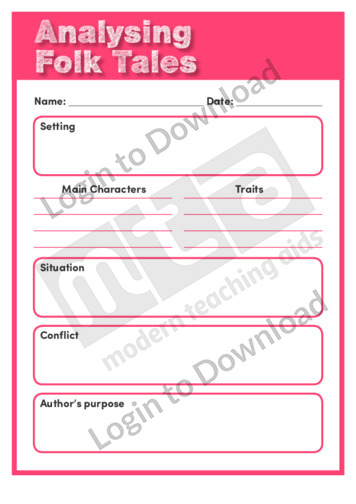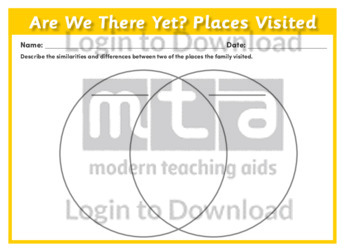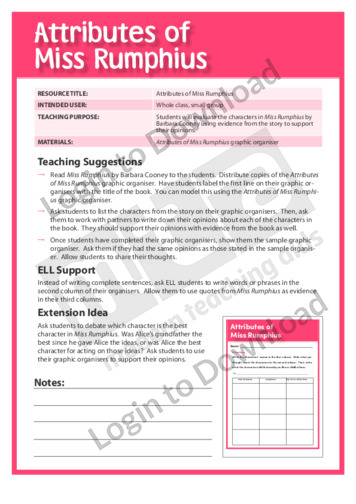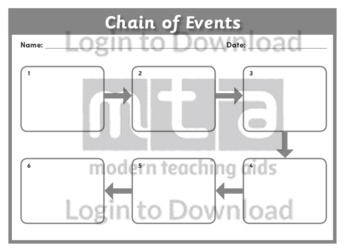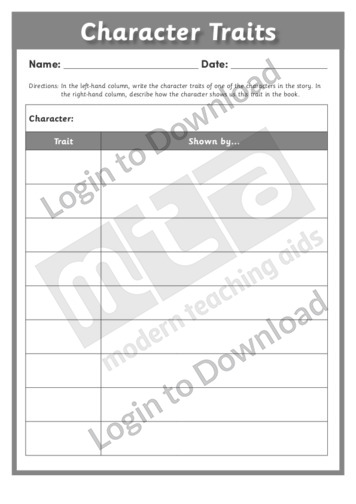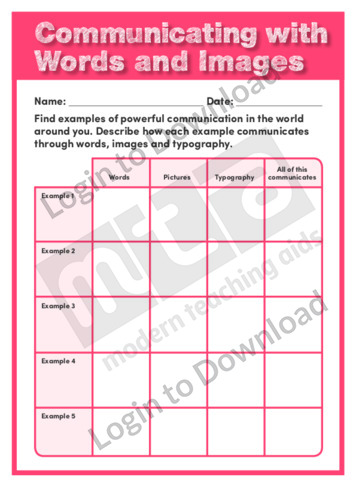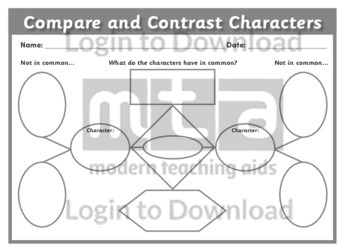This graphic organiser, ‘A Picture Tells a Thousand Words’ asks students to judge the importance of a photograph or other picture in a non-fiction text based on how much information it gives.
This graphic organiser, ‘A Storm of Symbols’ allows students to describe symbols and state their importance.
This graphic organiser, ‘A Web of Animal Information’ supports students in planning writing by brainstorming animals that could be used in informational writing.
This graphic organiser, ‘Analysing a Character’ supports the teaching of comprehension and reading strategies by prompting students to explore how and why a character changes over time in a story.
This graphic organiser, ‘Analysing a Text’ supports the teaching of reading and writing by prompting students to explore a range of meanings as they read or write.
This graphic organiser, ‘Analysing Characters’ supports the teaching of reading and writing by prompting students to explore how and why a character behaves in a story.
This graphic organiser, ‘Analysing Descriptive Language’ supports the teaching of reading and writing by prompting students to record descriptive details as they read or write.
This graphic organiser, ‘Analysing Folk Tales’ supports the teaching of reading and writing by giving students a template for identifying the features of folk takes.
This graphic organiser, ‘Analysing Point of View’ supports the teaching of comprehension and reading strategies by prompting students to explore the points of view of characters in a story.
This graphic organiser, ‘Analysing Sentences’ supports the teaching of reading by prompting students to explore a range of sentence structures.
This graphic organiser, ‘And the Beat Goes On’ allows students to phrase a text rather than reading it word-by-word to better understand the meaning of the text.
This graphic organiser, ‘And the Beat Goes On for Wright Brothers’ asks students to practise reading a text in phrases that are read with fluency, rather than word-by-word, to better understand the meaning of the text.
This graphic organiser, ‘Are Advertisements for Me?’ helps students to analyse an advertisement to determine the impact on their emotions.
This graphic organiser, ‘Asking Questions’ supports the teaching of comprehension and reading strategies by prompting students to ask and record their questions as they read.
This graphic organiser, ‘Asking Questions’ supports the teaching of reading and writing by giving students a template for recording their questions about a topics as they read or plan for writing.
This graphic organiser, ‘Asking Questions’ supports the teaching of comprehension and research skills by prompting students to ask questions based on what they want to know.
This graphic organiser, ‘Asking Questions’ supports the teaching of reading and writing skills by providing students with a template for asking questions and locating information.
This graphic organiser, ‘Asking Questions to Infer’ supports the teaching of comprehension and reading strategies by prompting students to record questions and infer meaning as they read.
This graphic organiser, ‘Attribute Chart’ supports students to evaluate characters in a story.
This graphic organiser, ‘Attributes of Miss Rumphius’ supports students to evaluate characters in the story ‘Miss Rumphius’.
This graphic organiser, ‘Book Report’ guides students through the process of writing a report on a fictional or non-fictional book. Book reports can be challenging as they require students to use higher-order thinking skills whilst critically evaluating the text. Using this resources will prompt students to correctly structure their report when organising and planning ideas …More
This graphic organiser, ‘Book Report’ guides students through the process of writing a report on a fictional or non-fictional book. Book reports can be challenging as they require students to use higher-order thinking skills whilst critically evaluating the text. Using this resources will prompt students to correctly structure their report when organising and planning ideas …More
This graphic organiser, ‘Book Talk’ encourages students to personally engage with reading material to formulate independent opinions and ideas.
This graphic organiser, ‘Book Talk for Bridge to Terabithia’ helps students reflect on what has been learnt after reading and to formulate ideas, opinions and personal responses to the text.
This graphic organiser, ‘Break it Down’ allows students to practise thinking of descriptive words and to sort the words by syllables.
This graphic organiser, ‘Bridging the Gap’ helps students identify similarities between two ideas, concepts or things, then state the advantages and disadvantages of each.
This graphic organiser, ‘Bubble Map’ allows students to list adjectives that describe communities of the past and present.
This graphic organiser, ‘Buddy’s Clock’ asks students retell a short story by sequencing the main events.
This graphic organiser, ‘Category Cars’ allows students to sort rocks into various categories.
This graphic organiser, ‘Cause and Effect’ supports the teaching of reading and writing in science by prompting students to identify the causes and their effects as they read and write.
This graphic organiser, ‘Cause and Effect Wheel’ serves as a visual analogy to show students how causes and effects are related and helps to develop their visual-thinking skills.
This graphic organiser, ‘Cause and Effect Wheel for My Brother Sam Is Dead’ serves as a visual analogy to show students how causes and effects are related and helps to develop their visual-thinking skills.
This graphic organiser, ‘Chain of Events’ combines skills in brainstorming and mind mapping to visually represent the relationship between sequential events. It can be used as a pre-writing task, to logically organise ideas, or a post-reading comprehension activity.
This graphic organiser, ‘Chain of Events’ supports the teaching of reading and writing in science by prompting students to identify the order of events as they read and write.
This graphic organiser, ‘Chain of Words’ helps students to learn the meaning of new vocabulary words by creating definitions that use only two words.
This graphic organiser, ‘Character Molecule’ asks students to connect pieces of isolated information to better understand characters from a text.
This graphic organiser, ‘Character Molecule for Runaway Ralph’ helps students to create character sketches based on synonyms and antonyms, providing them with a deeper understanding of Runaway Ralph by Beverly Cleary.
This graphic organiser, ‘Character Traits’ provides students with the opportunity to explore specific qualities of a fictional or non-fictional character, and explain how these traits are shown through the text. This table can be used during post-reading, whole class discussions or individually as a comprehension activity that encourages critical reflection and justification of opinions.
This graphic organiser, ‘Character Traits’ provides students with the opportunity to mind map and brainstorm specific character qualities including their appearance, speech, feelings and actions. Use this during post-reading, whole class discussions as a comprehension activity or when individually organising ideas to be used when writing about characters in creative stories.
This graphic organiser, ‘Character Traits for 2 Characters’ provides students with the opportunity to explore specific qualities of two fictional or non-fictional characters, and explain how their traits are shown through the text. This table can be used during post-reading, whole class discussions or individually as a comprehension activity that encourages critical reflection and justification …More
This graphic organiser, ‘Character Traits with Word Bank ‘ provides students with the opportunity to explore specific qualities of a fictional or non-fictional character, and explain how these traits are shown through the text. This table can be used during post-reading, whole class discussions or individually as a comprehension activity that encourages critical reflection and …More
This graphic organiser, ‘ Checkmate’ supports students in editing and revising their peers writing, focusing on consistency of point of view throughout the text.
This graphic organiser, ‘Checkmate for Schools’ supports students in editing and revising their peers’ persuasive writing, focusing on consistency of point of view throughout the text.
This graphic organiser, ‘Communicating with Words and Images’ supports the teaching of reading graphic texts by giving students a template for recording the features and impact of texts.
This graphic organiser, ‘Compare and Contrast Characters’ provides a blank mind map to assist students in organising the similarities and differences between character traits. Having students evaluate and analyse characters and then organise these ideas visually, provides a scaffold for all students to engage with higher-order thinking skills. It can be used as a whole …More
This graphic organiser, ‘Compare and Contrast Square’ provides a blank, square diagram to assist students in organising the similarities and differences between ideas. Having students evaluate and analyse concepts and then organise these ideas visually, provides a scaffold for all students to engage with higher-order thinking skills. It can be used as a whole class …More
This graphic organiser, ‘Compare and Contrast Triangle’ provides a blank, triangular diagram to assist students in organising the similarities and differences between ideas. Having students evaluate and analyse concepts and then organise these ideas visually, provides a scaffold for all students to engage with higher-order thinking skills. It can be used as a whole class …More
This graphic organiser, ‘Compare and Contrast: Making Generalisations’ supports the teaching of comprehension, reading strategies and the writing process by providing a template students can use to record information and thinking.
This graphic organiser, ‘Connect the Dots’ allows students to apply prior knowledge and understanding of a text to the world around them, as well as to themselves.
This graphic organiser, ‘Connect the Dots for Diary of a Wimpy Kid’ asks students to make connections between characters or simple events in literature to themselves, to other books they have read, or to people or events in their own lives.
This graphic organiser, ‘Connecting and Visualising’ supports the teaching of comprehension and reading strategies by asking students to record their personal connections to texts and the mental images they form as they read.
This graphic organiser, ‘Connotation Conundrum’ helps students to find and define new words that have connotative meanings, simultaneously improving their reading vocabulary and increasing their ability to interpret the text.
It�s that easy!









